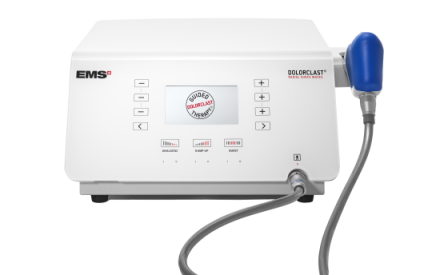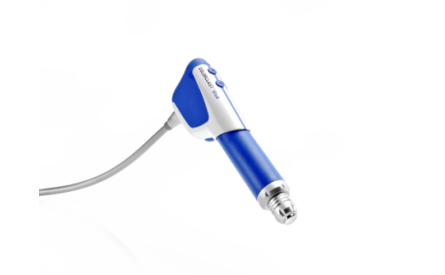
How to treat knee osteoarthritis with ESWT?
Alexander Ablaß is an experienced alternative practitioner for physiotherapy, physiotherapist, manual therapist and sports physiotherapist from Augsburg, who worked for 6 years for the football club FC Augsburg. Since July 2019 he has opened the physiotherapy center "Die Körperwerkstatt" in Augsburg in Germany, together with his business partner Ferdinand Merckx, which specializes in sports physiotherapy. The range of treatments includes not only the classic fields of treatment but also shock wave therapy with the Swiss DolorClast® Method.
How can shock wave therapy help with knee osteoarthritis?
Alexander Ablaß: For knee arthrosis, I treat everything around the knee - the muscles, capsule, ligaments, tendons, and retinacula. These are the structures that mainly cause the pain. Due to the arthrosis a pattern of restriction occurs, the so-called capsule pattern, and these symptoms are treated. Shock wave therapy then acts on the one hand via the pain receptor circulation, and on the other hand regeneratively through the activation of stem cells and growth factors. The loosening of the muscles caused by shock waves provides more mobility and elasticity in the treated tissue and thus leads to a relief of pressure in the joint.
How is Shockwave Therapy applied to the knee and is there anything to consider when applying it on the knee? Isn't it particularly painful for the patient to apply ESWT directly on the knee?
Alexander Ablaß: I apply shock waves as follows: I use the radial shock wave device with the large 36 mm applicator and treat all the muscles, tendons and ligaments that have a function in the knee. The treatment is not really painful, as I always pay attention to the individual pain threshold of my patients and specifically address it. On one hand, it is important to note that the blood vessels and nerves in the shallow depression located at the back of the knee is avoided, on the other hand, the patient should not have received a cortisone injection in the last 6 weeks.
What should the patient pay attention to after shock wave therapy for knee osteoarthritis?
Alexander Ablaß: I have to point out to the patient that after the treatment a short-term initial worsening can occur. This usually subsides again after 1-2 days. Also, no special rest period is necessary after the treatment.
Can we bridge some knowledge on the mode of action for how ESWT works in Jumper's knee?
Alexander Ablaß: Yes in any case. It can be transferred because mostly the same muscles are involved. Especially the tractus iliotibialis and the musculus tensor fasciae latae. Here, I also treat the structure around the knee with shock wave therapy and target the painful areas.
Can ESWT actually restore the damaged cartilage in a knee affected by osteoarthritis?
Alexander Ablaß: It is generally very difficult to treat those areas, so, unfortunately, it is not possible to affect a direct regeneration. The cartilage damage, as well as the arthrosis, remain, but shock wave therapy can clearly contribute to an improvement of symptoms.
Should supportive therapies be used in addition to the shock wave, which can help to accelerate recovery?
Alexander Ablaß: Yes, absolutely. We rely on an accompanying cryotherapy (editor's note = cold therapy) and laser therapy. Here it has been shown that you can additionally improve the effectiveness of the shock wave.
When are the first results of shock wave treatment visible?
Alexander Ablaß: Most patients experience an improvement and a feeling of relief already after the first treatment. Also, the patient usually feels less pressure on his knee after just one treatment. However, after three treatments, at the latest, the success becomes visible.
What are the key advantages of shock wave therapy in the treatment of compared to conservative methods in your opinion?
Alexander Ablaß: Firstly, shock wave therapy is non-invasive, and secondly, you can repeat it as often as you like. And the best thing about it: the patient notices improvements very quickly, which also last for some time. And the replacement of the knee joint with a prosthesis can be delayed.


